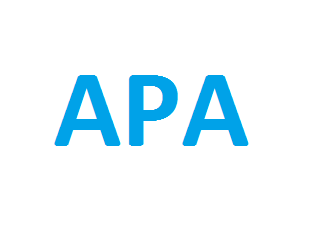
The Academic Perspective Procedia publishes Academic Platform symposiums papers as three volumes in a year. DOI number is given to all of our papers.
Publisher : Academic Perspective
Journal DOI : 10.33793/acperpro
Journal eISSN : 2667-5862
Prediction of Building Damage Caused by Earthquake with Machine Learning
Abstract
Estimating structural damage after an earthquake remains crucial in preventing loss of lives and properties. Conventional methods of damage estimation require a large amount of time and financial resources. For this reason, in recent years, machine learning algorithms that produce faster and more economical results have become the research topics of interest in damage estimation. Within the scope of this study, machine learning models that predict the damage level of the structure after the earthquake have been developed. In the models created, data sets containing structural and demographic information collected in 11 regions after the 2015 Gorkha, Nepal earthquake were used. Three classes of repair levels labeled by the engineers were chosen as the estimate label. The models were divided into Random Forest and XGBoost according to the classification algorithm they used, and models with and without demographic features according to the data they used. When the general accuracy rates of the models were compared, the models containing demographic information were more successful. The most successful result is the random forest model with an accuracy rate of 70.83% and the highest damage class recall value of 76.36%.
References
[1] K. A. R. V. D. Kahandawa, N. D. Domingo, K. S. Park, and S. R. Uma, “Earthquake damage estimation systems: Literature review,” Procedia Engineering, vol. 212, pp. 622–628, 2018, doi: 10.1016/J.PROENG.2018.01.080.
[2] S. Mangalathu, H. Sun, C. C. Nweke, Z. Yi, and H. v. Burton, “Classifying earthquake damage to buildings using machine learning:,” https://doi.org/10.1177/8755293019878137, vol. 36, no. 1, pp. 183–208, Jan. 2020, doi: 10.1177/8755293019878137.
[3] S. Mangalathu, H. Sun, C. C. Nweke, Z. Yi, and H. v. Burton, “Classifying earthquake damage to buildings using machine learning,” Earthquake Spectra, vol. 36, no. 1, pp. 183–208, Feb. 2020, doi: 10.1177/8755293019878137.
[4] Y. Xie, M. Ebad Sichani, J. E. Padgett, and R. DesRoches, “The promise of implementing machine learning in earthquake engineering: A state-of-the-art review:,” https://doi.org/10.1177/8755293020919419, vol. 36, no. 4, pp. 1769–1801, Jun. 2020, doi: 10.1177/8755293020919419.
[5] B. Adhikari et al., “Earthquakes, Fuel Crisis, Power Outages, and Health Care in Nepal: Implications for the Future,” Disaster Medicine and Public Health Preparedness, vol. 11, no. 5, pp. 625–632, Oct. 2017, doi: 10.1017/DMP.2016.195.
[6] R. K. Adhikari and D. D’Ayala, “2015 Nepal earthquake: seismic performance and post-earthquake reconstruction of stone in mud mortar masonry buildings,” Bulletin of Earthquake Engineering, vol. 18, no. 8, pp. 3863–3896, Jun. 2020, doi: 10.1007/S10518-020-00834-Y/FIGURES/29.
[7] “About the project.” http://eq2015.npc.gov.np/docs/#/about (accessed Aug. 11, 2022).
[8] “Introduction — NHRP Open Data Portal 1.0.0 documentation.” https://open-hrrp.readthedocs.io/en/latest/1_introduction.html (accessed Aug. 07, 2022).
[9] “2015 Nepal Earthquake: Open Data Portal.” https://eq2015.npc.gov.np/#/ (accessed Aug. 09, 2022).
[10] “USGS Earthquake Hazards Program.” https://earthquake.usgs.gov/ (accessed Aug. 07, 2022).
[11] A. Estabrooks and N. Japkowicz, “A mixture-of-experts framework for learning from imbalanced data sets,” Lecture Notes in Computer Science (including subseries Lecture Notes in Artificial Intelligence and Lecture Notes in Bioinformatics), vol. 2189, pp. 34–43, 2001, doi: 10.1007/3-540-44816-0_4/COVER.
[12] J. Brownlee, “Data preparation for machine learning: data cleaning, feature selection, and data transforms in Python,” 2020, Accessed: Aug. 07, 2022. [Online]. Available: https://books.google.com/books?hl=tr&lr=&id=uAPuDwAAQBAJ&oi=fnd&pg=PP1&dq=Jason+Brownlee+data+pre&ots=Cl5NAjeOrU&sig=stVN3hXjy-CvvuykeUVGs6vPuCc
[13] S. Jhaveri, I. Khedkar, Y. Kantharia, and S. Jaswal, “Success prediction using random forest, catboost, xgboost and adaboost for kickstarter campaigns,” Proceedings of the 3rd International Conference on Computing Methodologies and Communication, ICCMC 2019, pp. 1170–1173, Mar. 2019, doi: 10.1109/ICCMC.2019.8819828.
[14] L. Breiman, “Random Forests,” Machine Learning 2001 45:1, vol. 45, no. 1, pp. 5–32, Oct. 2001, doi: 10.1023/A:1010933404324.
[15] “XGBoost Documentation — xgboost 2.0.0-dev documentation.” https://xgboost.readthedocs.io/en/latest/ (accessed Aug. 07, 2022).
[16] M. Grandini, E. Bagli, and G. Visani, “Metrics for Multi-Class Classification: an Overview,” Aug. 2020, doi: 10.48550/arxiv.2008.05756.
Cite
-
 %0 Academic Perspective Procedia (ACPERPRO) Prediction of Building Damage Caused by Earthquake with Machine Learning% A Muhammed Ali Hasiloglu , Tuba Tatar% T Prediction of Building Damage Caused by Earthquake with Machine Learning% D 11/1/2022% J Academic Perspective Procedia (ACPERPRO)% P 72-82 % V 5% N 2% R doi: 10.33793/acperpro.05.02.2001% U 10.33793/acperpro.05.02.2001
%0 Academic Perspective Procedia (ACPERPRO) Prediction of Building Damage Caused by Earthquake with Machine Learning% A Muhammed Ali Hasiloglu , Tuba Tatar% T Prediction of Building Damage Caused by Earthquake with Machine Learning% D 11/1/2022% J Academic Perspective Procedia (ACPERPRO)% P 72-82 % V 5% N 2% R doi: 10.33793/acperpro.05.02.2001% U 10.33793/acperpro.05.02.2001




